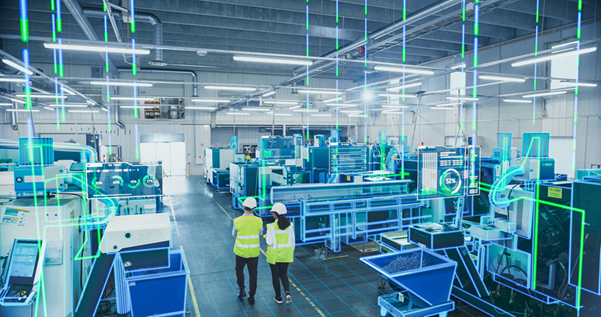Walk into any modern factory and you’ll notice something different. Machines are communicating with each other, quality checks happen in milliseconds, and maintenance teams know about issues before they occur.
Walk into any modern factory and you’ll notice something different. Machines are communicating with each other, quality checks happen in milliseconds, and maintenance teams know about issues before they occur.

This transformation is powered by AI-driven manufacturing systems that turn raw sensor data into actionable intelligence—helping factories stay competitive in an increasingly demanding market.
The difference between thriving and struggling manufacturers often comes down to one thing: how quickly they can turn data into decisions.
Smart manufacturers deploy AI across three critical areas: quality control, predictive maintenance, and supply-chain optimization.
Quality Control: Computer vision systems now inspect products at full production speed, catching defects smaller than the human eye can detect. This dramatically reduces scrap rates and warranty claims. Unlike traditional methods that slow production, AI-powered inspection works seamlessly at manufacturing line speeds.
Predictive Maintenance: AI analyzes vibration patterns, temperature changes, and power consumption to predict failures weeks in advance. This shift from reactive to proactive maintenance can:
Supply-Chain Intelligence: AI connects internal production data with external signals such as supplier performance and market demand, enabling factories to maintain optimal inventory without locking up capital in excess stock.
“A major automotive manufacturer implemented AI-based inspection for metal components, improving detection accuracy, reducing manual inspection steps, and accelerating throughput. The system integrated with existing production setups, enabling fast deployment and scalable quality control across critical parts.”
AI delivers measurable operational and financial benefits:
Catching defects early avoids costly field repairs and customer claims. Optimized energy and maintenance planning improves both operational efficiency and sustainability.
Real-time AI systems improve equipment reliability, product quality, and lead times. This agility becomes a competitive edge, allowing manufacturers to respond faster to changing customer demands.
AI adoption also supports sustainability by reducing waste, optimizing energy usage, and improving equipment lifecycle efficiency.
Successful AI transformation starts with measurable goals and disciplined execution:
Most manufacturers see meaningful results within 8–12 weeks, with ROI visible in the first few production cycles.
Factories using AI convert speed into strength. They:
The result: lower costs, higher quality, faster delivery, and stronger customer satisfaction.
The most competitive factories today combine the reliability of automation with the intelligence of AI. Manufacturers that take a structured approach—starting with clear performance goals, leveraging existing data sources, and gradually scaling proven pilots—achieve faster adoption and stronger ROI.
Whether you’re addressing unexpected downtime, quality variability, or increasing operational costs, AI-driven systems can help improve efficiency, enhance quality, and create more resilient production environments.
As Industry 4.0 continues to evolve, organizations that build real-time data intelligence into their manufacturing workflows will remain ahead of the curve—more agile, more efficient, and better positioned to compete in global markets.
Published On: November 3, 2025
Last Updated : November 3, 2025

Leading AI News from Top Experts & Innovators!

Get the Latest AI News & Trends!